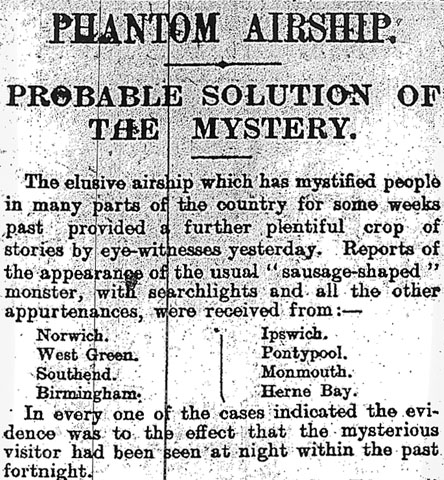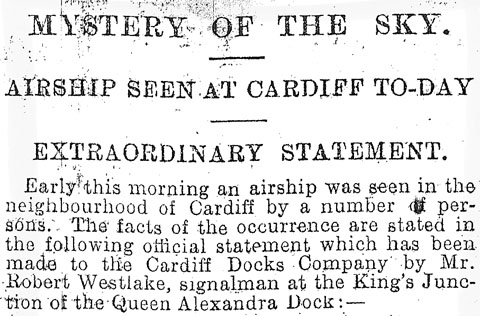Friday, 21 May 1909
After yesterday’s excitement, today is something of an anticlimax as far as scareships are concerned. In fact, it’s more like a backlash. There are some new sighting reports, from Wales again and from Birmingham. The Manchester Guardian reports (p. 7) that Oliver L. Jones, a Monmouth auctioneer (of Messrs. Nelmes, Poole, Jackson and Jones), his […]





